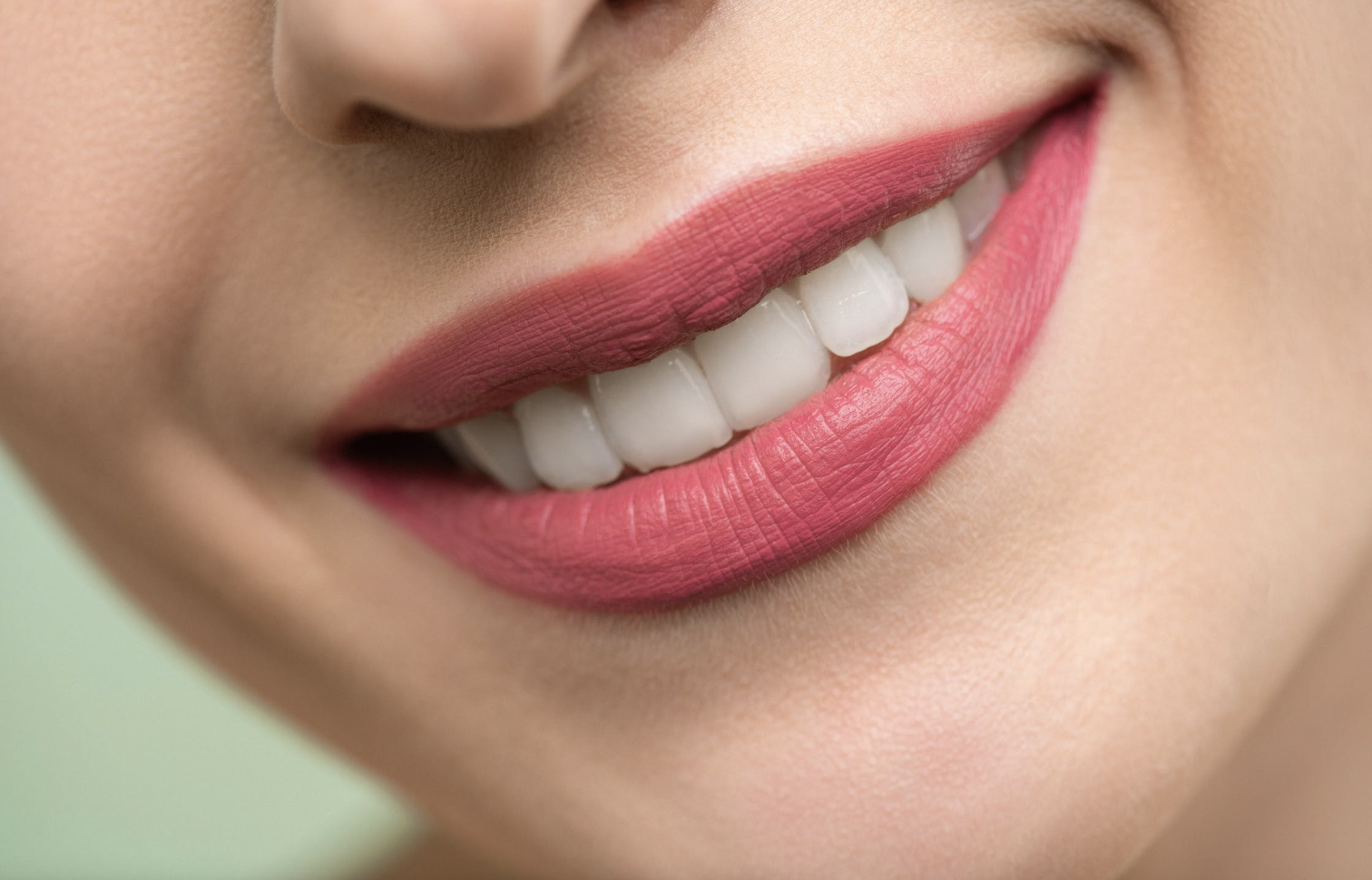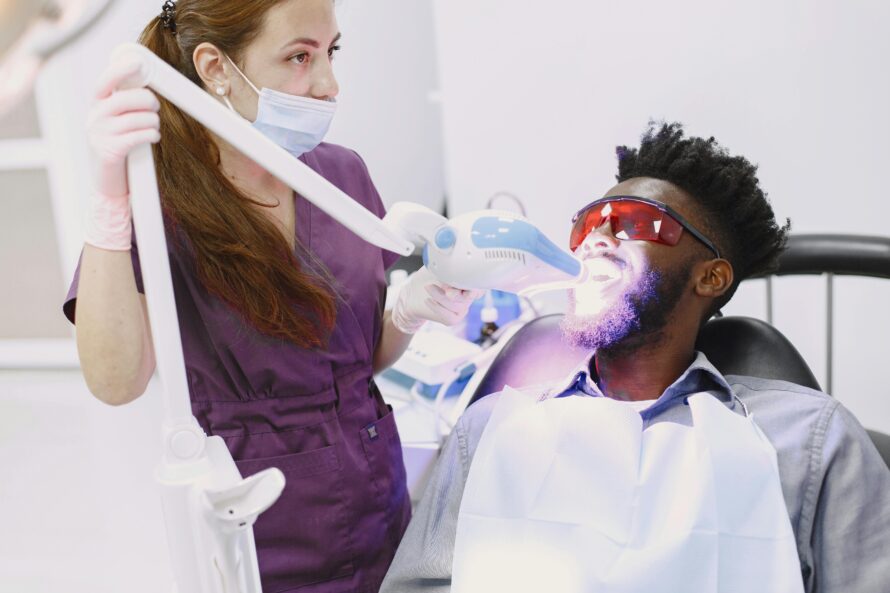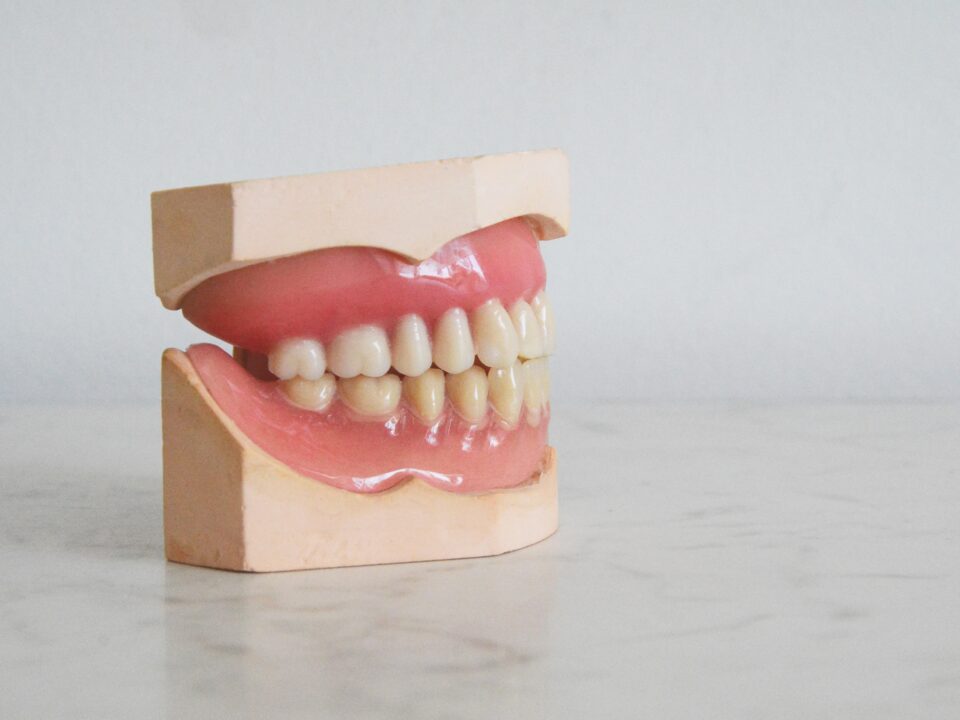
Causes and Consequences of Teeth Grinding
April 13, 2022
Are Veneers Right for You?
June 14, 2022If your gums are dark, hyperpigmented, or patchy with different tones, you might be interested in a gum bleaching or gum depigmentation procedure. This treatment not only lightens and improves the natural color of the tissues surrounding your teeth, including the gum tissue, but it specifically targets and addresses excessive pigmentation.
In this blog, we’ll go over why some people have darker-colored gums and explore options like gum depigmentation. We’ll also discuss the difference between bleaching, whitening, and lightening and cover details about the gum bleaching treatment. Understanding the factors affecting gum tissue color and exploring effective procedures, such as gum depigmentation, can contribute to achieving a brighter and healthier smile.
[Related: How to Whiten Your Teeth]
Causes of Hyperpigmentation in the Gums
The main cause for dark gums is genetics, which can cause excess melanin buildup in the gums for people of African or Middle Eastern descent. However, we should note that dark gums can affect people of all ethnicities. Other factors that can cause pigmented gums include smoking, medication side effects, illness or amalgam fillings.
Regardless of the cause of your dark gums, if you’re unhappy with the way they look, you can opt for gum bleaching — sometimes called gum whitening, lightening or gum depigmentation.
Is There a Difference Between Gum Bleaching, Whitening and Lightening?

Although bleaching, whitening and lightening are different terms and technically mean different things, they generally refer to the same thing and are used interchangeably in the context of gum procedures. Gum whitening, bleaching, and lightening are all words used to describe the process of gum depigmentation.
[Related: Considering Gingival Flap Surgery? Here’s What You Should Know]
Gum Bleaching Procedures
Contrary to what the term would lead you to believe, gum bleaching doesn’t involve the use of harsh bleach on the gums.
Microdermabrasion
The traditional method of gum bleaching involves a microdermabrasion tool that takes a whitening gel and “buffs” out the hyperpigmented outer layer of the gum tissue. This method takes about an hour to complete, and your dentist will numb your mouth completely beforehand. The results are immediate.
Dental Lasers
Many dentists now use dental lasers for gum lightening. Researchers have found this method is the most effective, painless and reliable when it comes to long-lasting gum bleaching procedure. After your dentist applies an anesthetic or sedation, they’ll use a dental laser to lighten and erase patches of discoloration on the gum tissues. These sessions usually take only about 30 minutes, and afterward, you’ll leave the office with brighter, pinker and healthier-looking gums.
[Related: How to Properly Treat Your Receding Gums]
Who Can Get Their Gums Bleached?
If you’re struggling with dark, hyperpigmented or patchy color, you may qualify for a gum bleaching procedure.
However, this treatment is unsuitable for some patients with/who are:
- Oral diseases or infections
- Dark gums causes by periodontal disease
- Extremely thin gums
- Taking blood thinners
- Prominent tooth roots
Check with your dentist ahead of time to see whether your dental anatomy is healthy enough to undergo gum lightening treatment.

How Much Does Gum Bleaching Cost?
Because insurance companies consider gum lightening a cosmetic dentistry treatment, most dental insurance plans won’t cover it. The price of gum bleaching or gum depigmentation will depend on what dentist you see, your location, the method you undergo and the level of discoloration on your gums. Prices can range from $800 to $1,500 for both the upper and lower set of gums.
[Related: Periodontal Maintenance]
Healing Process
The healing process for gum bleaching is simple and typically pain-free. You may experience minor discomfort right after the procedure, especially if you have sensitive gums, but this will last only a short time. Everything should be healed and feel completely normal in about one to two weeks.
Dentists suggest patients who undergo gum depigmentation treatment avoid smoking, alcohol and harsh foods following treatment.
Additionally, consider scheduling a check-in appointment with your dentist two weeks after your gum whitening treatment to make sure everything is going as planned.
[Related: How to Treat Recurring Swollen Gums]
Contact Cascadia Dental Specialists Today!
In conclusion, gum bleaching is a cosmetic dental procedure that has gained popularity for individuals seeking to enhance the aesthetics of their smiles. Whether addressing issues of pigmentation, dark spots, or uneven coloration, gum bleaching can provide a solution for those looking to achieve a brighter and more uniform gum appearance.
If you have any questions or concerns about gum bleaching, gum pigmentation, or if you’d like to schedule a consultation to discuss the health of your gum tissue, please contact Cascadia Dental Specialists at (425) 644-7444, through our web contact form, or via email at info@cascadiadental.com. With proper care and professional guidance, gum depigmentation can be a safe and effective option for enhancing the overall appearance of your smile and boosting self-confidence. Ensuring healthy gum tissue is essential for maintaining oral well-being, and our team is here to address any inquiries or provide expert advice on gum pigmentation and related treatments.
We’ll speak with you soon!
Featured image via Pexels





